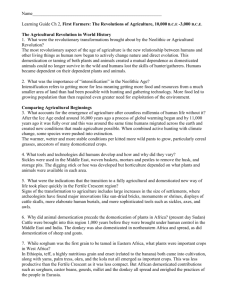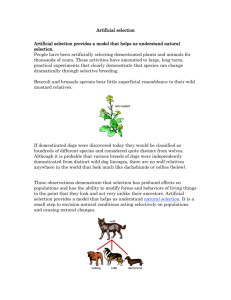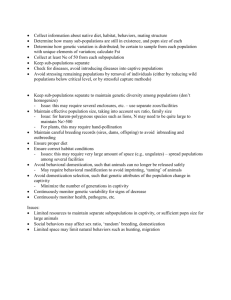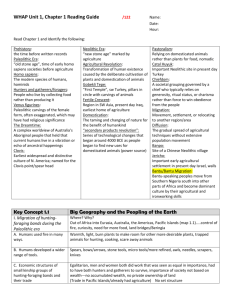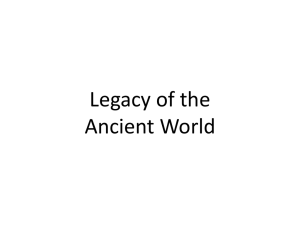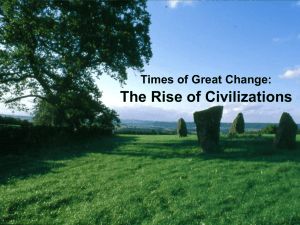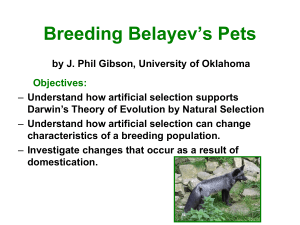Chapter 13 notes
advertisement
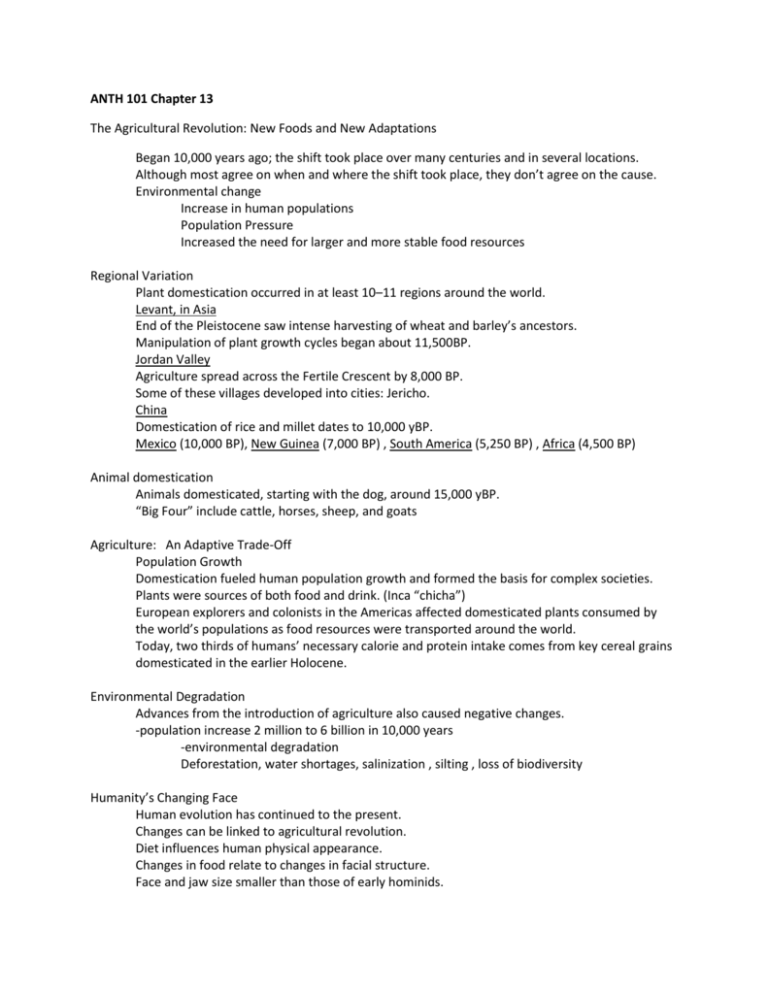
ANTH 101 Chapter 13 The Agricultural Revolution: New Foods and New Adaptations Began 10,000 years ago; the shift took place over many centuries and in several locations. Although most agree on when and where the shift took place, they don’t agree on the cause. Environmental change Increase in human populations Population Pressure Increased the need for larger and more stable food resources Regional Variation Plant domestication occurred in at least 10–11 regions around the world. Levant, in Asia End of the Pleistocene saw intense harvesting of wheat and barley’s ancestors. Manipulation of plant growth cycles began about 11,500BP. Jordan Valley Agriculture spread across the Fertile Crescent by 8,000 BP. Some of these villages developed into cities: Jericho. China Domestication of rice and millet dates to 10,000 yBP. Mexico (10,000 BP), New Guinea (7,000 BP) , South America (5,250 BP) , Africa (4,500 BP) Animal domestication Animals domesticated, starting with the dog, around 15,000 yBP. “Big Four” include cattle, horses, sheep, and goats Agriculture: An Adaptive Trade-Off Population Growth Domestication fueled human population growth and formed the basis for complex societies. Plants were sources of both food and drink. (Inca “chicha”) European explorers and colonists in the Americas affected domesticated plants consumed by the world’s populations as food resources were transported around the world. Today, two thirds of humans’ necessary calorie and protein intake comes from key cereal grains domesticated in the earlier Holocene. Environmental Degradation Advances from the introduction of agriculture also caused negative changes. -population increase 2 million to 6 billion in 10,000 years -environmental degradation Deforestation, water shortages, salinization , silting , loss of biodiversity Humanity’s Changing Face Human evolution has continued to the present. Changes can be linked to agricultural revolution. Diet influences human physical appearance. Changes in food relate to changes in facial structure. Face and jaw size smaller than those of early hominids. Two Hypotheses 1) Early explanation focused on racial differences. 2) Masticatory-functional hypothesis states that changes in skull form are a response to decreased demands on the chewing muscles. Changes in the face affect the teeth. Many more individuals today suffer from crowded jaws. Tooth size has decreased, but at a pace different from those of skull and jaw decreases. Building a New Physique: Agriculture’s Changes to Workload/Activity Changes in workload and activity have also affected human physical appearance. Bone responds to stresses on it over the course of a lifetime. How hard someone works affects the skeleton. The strength of bones in different populations illustrate the response to changing workloads. The general evolutionary trend in humans is to a smaller, more gracile skeleton. Health and Agricultural Revolution Population Crowding and Infectious Disease Increased population size and density caused the spread of more infectious illnesses; diet was also affected. Bones can reveal the presence of infectious illnesses even after hundreds of years. Studies suggest treponematoses (non-venereal syphilis) affected many populations Tuberculosis also was found early around the world. Nutritional Consequences Due to Missing Nutrients: Reduced Growth and Abnormal Development Lack of essential nutrients leads to smaller body size and developmental abnormalities. Bones and teeth provide excellent ways of assessing dietary changes and nutritional deficits. Nutritional Consequences of Iron Deficiency Iron deficiency causes anemia and is seen in the skull. Nutritional Consequences: Heights on the Decline Across the world, increases in adult height have stopped and heights have decreased. If It Is So Bad for You, Why Farm? Agricultural practices increased human fertility. More calories per land unit and more food resources for population increases The Past Is Our Future Currently the world is undergoing changes as a result of the foundations laid in the transition from foraging to farming. The world’s populations are under pressure from changes relating to global climate change. These changes could result in major changes on a global scale. Our Ongoing Evolution Humans are the most dominant evolutionary force on the planet. Anthropogenic changes can be seen in numerous organisms around the world. Time will tell if humans can use the culture and intelligence that has marked us as a successful species to alter the negative changes that we have caused.

